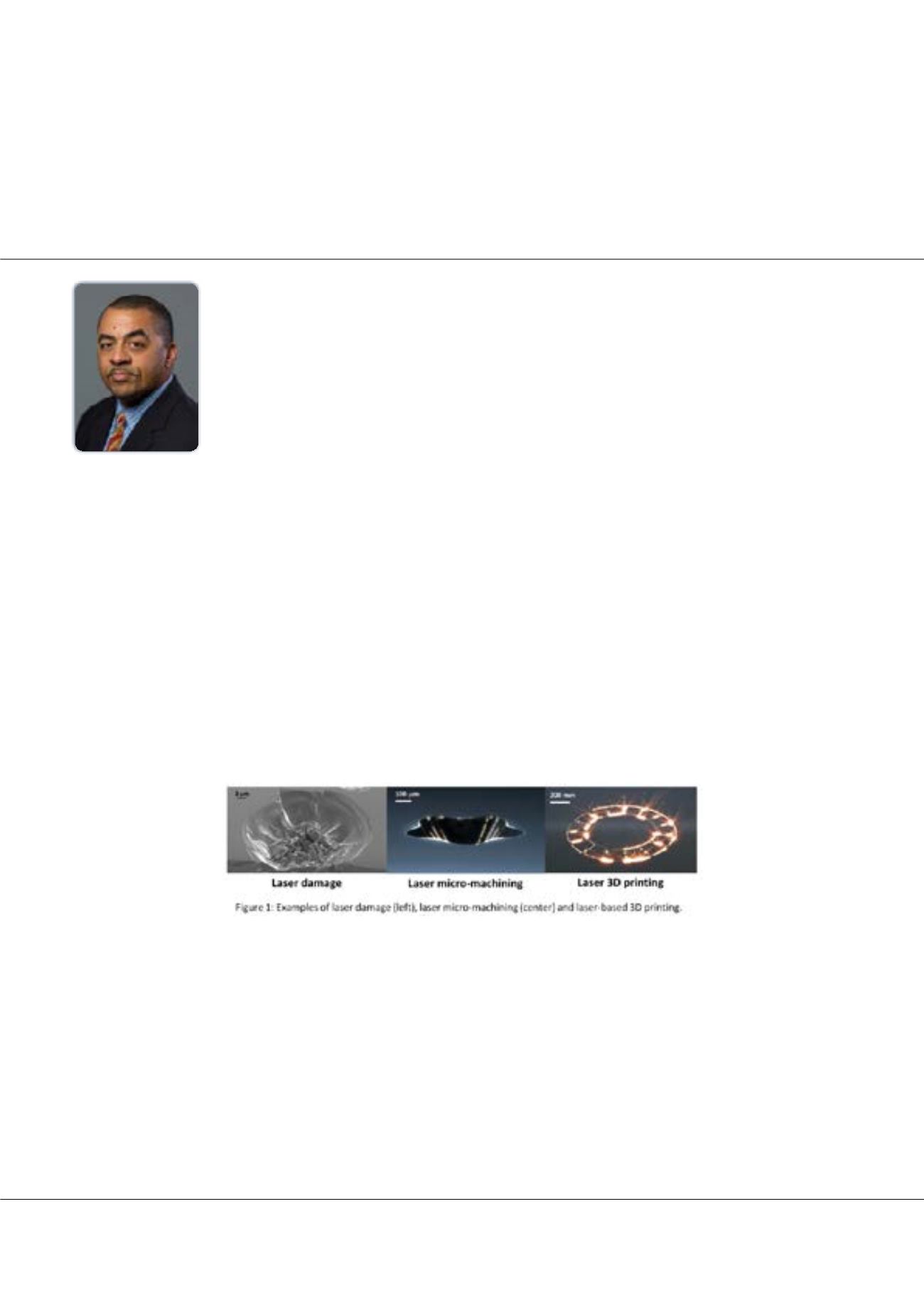

Volume 4, Issue 2 (Suppl)
J Laser Opt Photonics, an open access journal
ISSN: 2469-410X
Page 25
conference
series
.com
JOINT EVENT
July 31- August 02, 2017 Milan, Italy
&
6
th
International Conference on Photonics
7
th
International Conference on Laser Optics
Understanding lasermaterials processing: the dichotomy between laserdamage and lasermachining
I
n the decades since the invention of the laser, new applications and discoveries in materials science have continued year
after year as laser sources evolve and more areas of research exploit them. The transformation of materials using focused,
high irradiance laser beams fundamentally involves multiple physical phenomena such as optical absorption, heat transport,
structural mechanics and material phase transitions. For example, nonlinear absorption of nanosecond pulsed laser light can
lead to a nano-scale thermal runaway effects and subsequent damage, which can be detrimental in the operation of high power
laser systems. On the other hand, laser processing of materials often involves ablative removal of material or transformations
which rely on efficient coupling of laser energy into a work piece. In both cases, understanding laser-material interactions
is essential for the optimization of the high power optical system design. In this talk, we will present a few examples of high
photon flux laser material processing, using both experiment and finite element modeling to understand energy deposition,
heat transport and material transformation. Specifically, we will explore the conditions which bring about optical damage in
ultraviolet Q-switched laser optics and compare these conditions to those used in typical microscale laser materials processing
technologies. Among the laser processing techniques discussed, we will focus onmicrosecond-pulsed, resonant IR laser heating
for laser micro-machining and metal powder bed additive manufacturing (3D printing). We will discuss how our results can
be used to elucidate material behavior, optimize processing and develop new technologies based on laser modified materials.
Biography
Manyalibo J Matthews currently serves as Deputy Group Leader in the Optical Materials and Target Science group in MSD. He holds a PhD in Physics from MIT and a
BS in Applied Physics from UC Davis. His research interests at LLNL include novel applications in laser-assisted material processing (e.g. metal additive manufacturing,
laser-based CVD, nano-coarsening of metal films, non-contact laser polishing of glass), optical damage science, vibrational spectroscopy and in-situ optical character-
ization of transient processes. Prior to LLNL, he was a Member of Technical Staff at Bell Labs and worked on materials characterization of optical devices using novel
spectroscopic techniques, stress-induced birefringence management in planar optical devices and research in advanced broadband access networks. He is a Fellow of
the Optical Society of America.
ibo@llnl.govManyalibo J Matthews
Lawrence Livermore National Laboratory, USA
Manyalibo J Matthews, J Laser Opt Photonics 2017, 4:2(Suppl)
DOI: 10.4172/2469-410X-C1-010
















